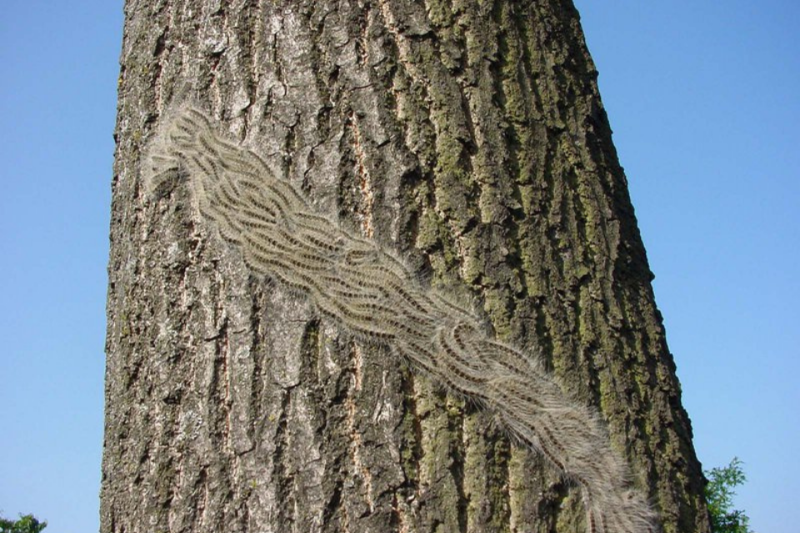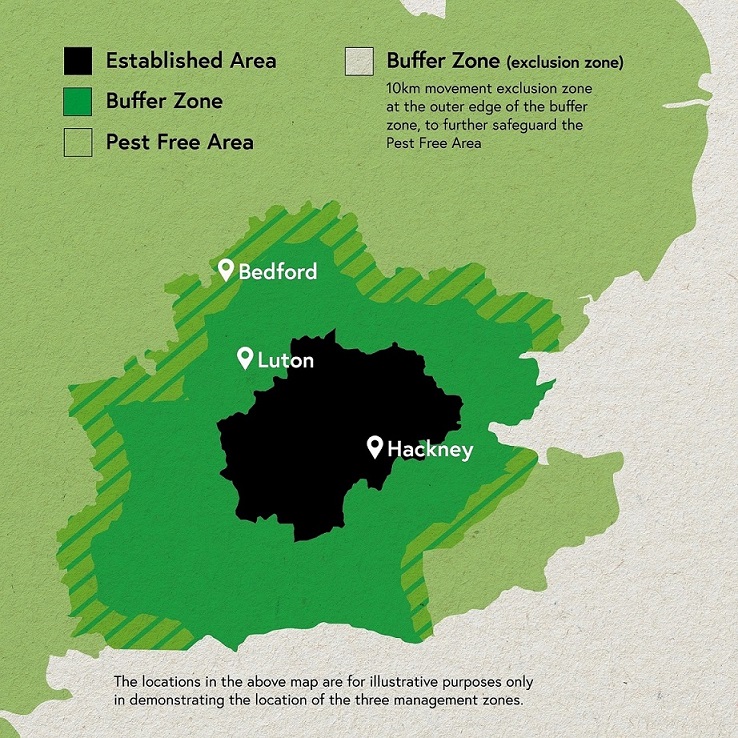
Changes to oak processionary moth management zones
Defra has expanded the Oak Processionary Moth Buffer zone and Established area boundaries in the South East of England, and will soon be introducing new rules concerning the movement of large oak trees within these areas.
What is Oak Processionary Moth (OPM)?
The oak processionary moth is an insect pest found on oak trees, our most common broadleaved tree. Caterpillars can defoliate oak trees and pose risks to human and animal health. OPM is considered ‘established’ in London and some surrounding counties, whilst the rest of the country is considered to be an Area Free from the Pest.
What restrictions should I be aware of?
There are three OPM management zones in Great Britain:
- Established Area
- Buffer Zone
- Pest Free Area
In March 2023 the Buffer zone and Established Area boundaries in the South-East of England were expanded to reflect the current areas of known OPM infestation. The new boundaries are available to view in detail on GOV UK and the OPM distribution map.

Within the management zones restrictions are in place to manage the spread of OPM. Restrictions apply to large oak trees with a girth (circumference) at 1.2m above the root collar of 8cm or more (2.55cm diameter approx.) or more within the Buffer Zone and Established Area.
There are no movement restrictions on small oak trees (with a girth at 1.2m above the root collar of less than 8cm) which can be moved throughout the whole of Great Britain. But all plants still need a plant passport when moved between professional operators.
What are the changes in May 2023 and how could these affect you?
New legislation is set to come into force on 24th May 2023 that will bring some key changes in the Established Area and Buffer Zone. The changes will affect professional operators (including landscapers) responsible for growing, purchasing, holding or planting large oak trees in the Buffer zone or Established area.
The following will apply:
- Movement restrictions* on where large oak trees can be moved to and from in these areas:
- No movement of large oaks from the Established Area to the Buffer Zone;
- No movement from the Buffer zone or Established Area to a 10km exclusion zone at the outer edge of the Buffer Zone;
- No movement into the Area Free from the Pest from the Established Area or the Buffer Zone, unless those trees have been grown throughout the entirety of their life under complete physical protection from OPM.
- Biosecurity requirements* will apply to anyone who holds large oak trees for more than 48 hours before they are moved to the final planting site
- Professional operators must keep records of the dates of movement and destination of large oak trees, as well as the tree species and size and the identity and contact details of the recipient
- Professional operators must notify recipients of large oak trees at their final destination that official planting inspections for OPM may be carried out by a plant health inspector
*Full details on the movement restrictions and biosecurity requirements can be found at Managing Oak Processionary Moth GOV.UK guidance.
A new digital guide has been published on GOV UK to explain all of these upcoming changes that could impact oak tree planting in the South East.
If you are holding large oak trees for more than 48 hours, you must contact your local Plant Health Inspector or contact the APHA Plant Health and Seeds Inspectorate to discuss how the changes will affect you.
Any findings of OPM in the Buffer Zone or Area Free from the Pest should be reported to Tree Alert or to the APHA Plant Health and Seeds Inspectorate.
